The Calathea Rufibarba is an eye-catching plant that has a one-of-a-kind look and is perfect for low-maintenance indoor gardening. They have a rapid rate of growth and easy propagation, which will surely bring lushness and volume to your gardens, may it be indoors or outdoors.
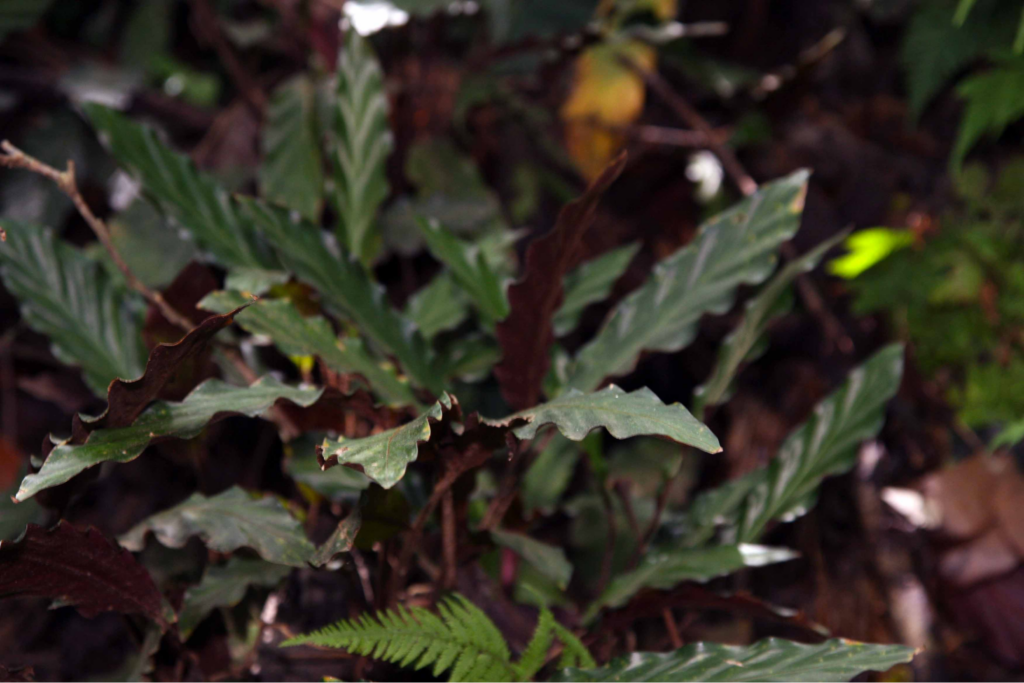
Also called the Furry Feather Plant, it boasts its fuzzy foliage texture that is bright green, bushy, narrow, wavy leaves when young. As the leaves grow, they turn deeper green on the top and maroon to burgundy on the bottom.
Do you want to learn more about what Calathea Rufibarba has to offer? Take time to read this article and let yourself be mesmerized by how awesome this plant is!
Calathea Rufibarba Profile

General Information
Calathea Rufibarba (Goeppertia rufibarba) is a rare and aesthetically-pleasing plant. This is also commonly known as Fuzzy Calathea and Furry Feather Calathea due to its fluffy leaf texture.
The Calatheas are perennial tropical plants that come from the plant family Marantaceae and are native to the Amazon rainforests in Brazil, South America, and other tropical countries.
Interestingly, this plant develops a stem that is coated in a reddish down that creates a striking contrast with the top leaf surface, which is a lovely brilliant green hue. The leaves undersides are a stunning shade of bluish-green with purple undertones. Its foliage is elongated.
Etymology
The scientific genus name “Goeppertia” is derived from the name Johann Heinrich Robert Goeppert, a German botanist and paleontologist.
On the other hand, the genus name “Calathea” is derived from the Greek word “kalathos,” which means basket or vessel. This is due to how the Native South Americans used this plant to weave baskets.
Flowering
The Calathea Rufibarba rarely flowers indoors. But when they do, they produce stunning orange-colored long flower spikes with a small rosette of subtle flowers.
Season of Interest and Purchasing
Early spring to late summer is when Furry Feather Calathea is best purchased since this is their growing season. This plant is best for anyone searching for low-maintenance gardening. Along with its fuzzy, attractive appearance, it also helps improves both air quality and home interior.
Growth
Calathea Rufibarba plant is a relatively fast-growing tropical perennial that can achieve maturity and its height potential (up to 2 feet) in one year and then halts. When young, the leaves are bright green, bushy, narrow, and wavy. As they mature, the leaves get darker green on top and maroon to burgundy on the underside.
Calathea Rufibarba Overview
| Scientific name | Geoppertia rufibarba |
| Common name/s | Velvet Calathea, Furry Feather Plant, Fuzzy Calathea, Calathea Rufibarba |
| Family | Marantaceae |
| Growth Habit | Herbaceous |
| Height and Spread | Can grow up to 24-36 inches tall, and a spread of 12-18 inches |
| Classification based on life cycle | Perennial |
| Origin and Distribution | Originates from Brazil, South America, and other tropical countries |
| Climate Zone | Generally warmer climate |
| USDA Plant Hardiness Zone | USDA Zone 10 – 11 |
| Color | Dark green leaves on top, maroon to burgundy at the bottom, with small hairs |
RELATED: How To Care for a Calathea Ornata? (Questions + Answers)
Care Tips
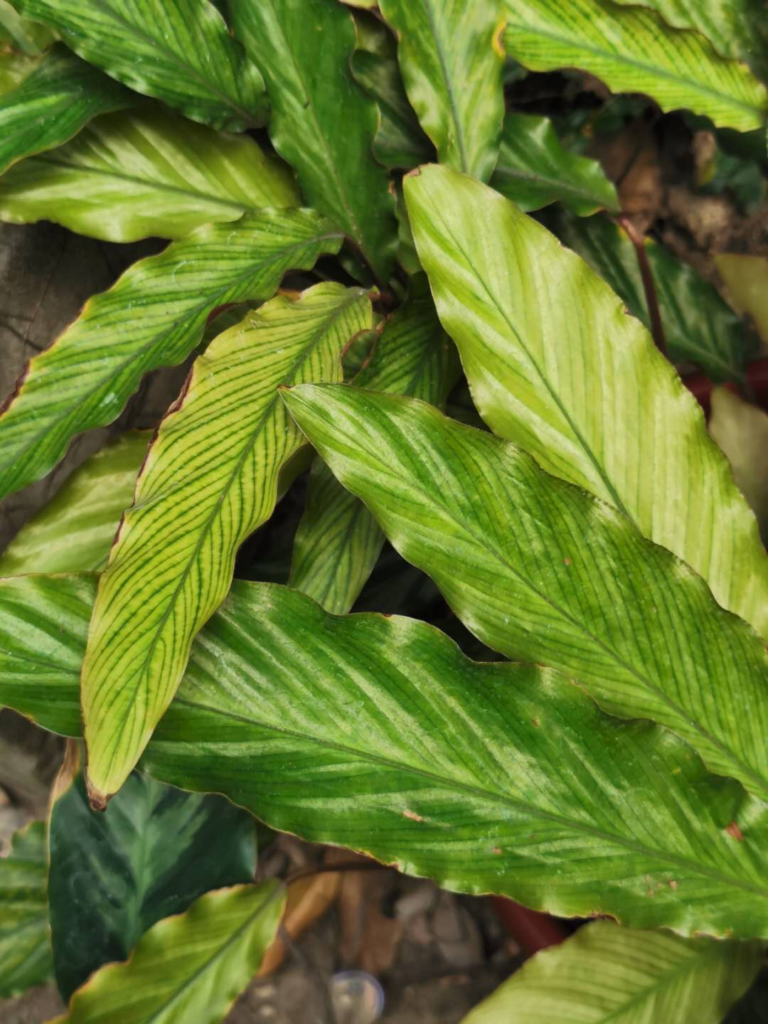
Light Requirement
The Calathea Rufibarba prefers plenty of light. Ideally, it requires a bright indirect light for six to eight hours every day. Therefore, this plant is ideally able to thrive near a west or east-facing window.
You must keep your Calathea plant out of direct sunlight to prevent the leaves from being harmed, being sunburned, and altering the color of the foliage.
Temperature Requirement
Calathea is a tropical plant; thus, its year-round optimal temperature range is between 60 and 70 degrees Fahrenheit. However, Calathea Rufibarba is sensitive to temperatures below 50°F (10°C) since cold temperatures will cause it to perish.
Avoid placing your plant in drafty regions to avoid fungal issues. Additionally, it is advised to maintain fresh air ventilation for a healthier Calathea plant.
Water Requirement
The water requirement of Calathea Rufibarba is quite picky as it has a low tolerance to the chemicals found in tap water or extreme water temperatures. Therefore, when watering your Furry plant, always make use of rainwater, distilled or filtered water, or room temperature bottled water.
In addition, this is also one of those thirsty plants that need more water, so you should always keep its topsoil slightly wet but never soggy. Always check the top 2-3 inches of the soil before watering. Permit the water to drain thoroughly to avoid overwatering and root rot.
During the winter, you can reduce the watering frequency as it becomes semi-dormant during this season.
Humidity Requirement
Calathea Rufibarba enjoys conditions with extreme humidity. Maintain humidity ranging from 50 percent to 60 percent. Low humidity can also be tolerated. However, if the humidity is too low for a long duration of time, the plant may cause its leaves to dry up, droop, and overall appear sick.
Check the amount of air moisture in the Calathea Rufibarba’s vicinity with a straightforward hygrometer. If the reading is extremely low, a pebble tray, humidifier, or mist can be used to increase the humidity.
It helps create a more humid atmosphere that is perfect for growing various types of houseplants and maintaining the shape of Calathea Rufibarba.
Soil Requirement
This plant requires moist, well-draining soil. Calatheas thrive in any nutrient-rich, well-draining soil mixture to better support the growing plant, just like many tropical indoor houseplants.
It should work just well with a standard potting mix, but mixing it with perlite, sphagnum moss, sand, coconut coir, or bark will make the soil less compact and help the aeration of the roots.
Additionally, a proper drainage system ensures root rotting and other illnesses can be prevented because it allows for water to percolate out of the pot. Consider adding gritty and chunky objects to your plant soil to encourage aeration.
RELATED: 15 Breath-taking Types Of Calathea For Your Private Tropic Corner
Fertilizer Requirement
Fertilizers are not necessary for Calathea rufibarba to grow effectively. Only during the growing season does the plant require fertilizer; therefore fertilizing in the fall or winter is strongly discouraged.
To promote healthy leaf growth and color during the growing season, use a liquid fertilizer (houseplant) high in nitrogen 3:1:2 NPK ratio at half the strength of the recommended dosage they need in order to thrive rather than just survive.
Space Requirement
The Furry Feather Calathea does well close to a window or in an open, shaded space and enjoys a spot with some shade. Place it at least 3 to 4 feet from your window to give it ample light. Any location with access to bright indirect sunlight will be ideal for its growth.
It may be grown in pots or in soil. However, it does best in cramped areas and beautiful containers like terrariums.
Growing And Planting Tips
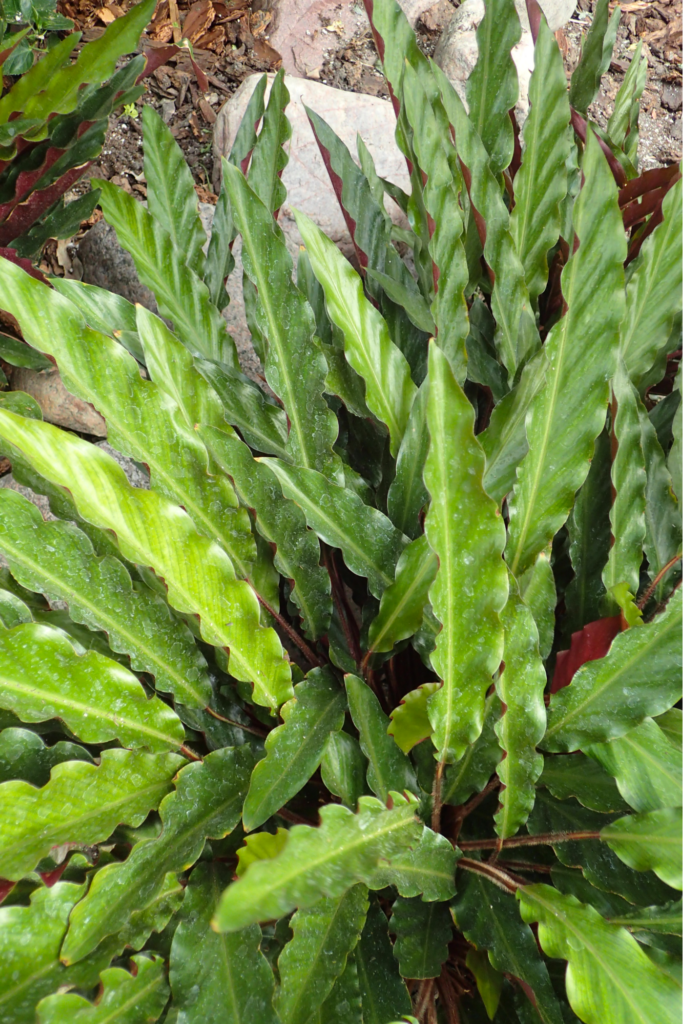
Propagation
Stem cuttings are often the simplest way to propagate any type of plant. But sadly, stem cuttings cannot be used to propagate Calathea rufibarba. Root division is used to mainly propagate this plant. Normally, it is carried out at the start of the growing season.
When a plant is propagated through root division, its vegetative elements are split up into several plants, sometimes producing a brand-new plant right away. It is extremely straightforward to divide plant clumps into new pots.
Below are the complete steps to propagate this plant via root division:
- Upon taking your Calathea plant out, shake out any excess soil and dirt from your plant. Each stem’s natural boundary should be visible. You may use your hands to separate the stems from one another.
- Clip the roots when necessary, but ensure not to inflict damage to the major root balls. You can separate the tangled roots with your fingertips or, if required, a clean, sharp object.
- Replant the mother plant in its original container with fresh soil, ensuring the roots are buried.
- Ensure to place the plants in pots that are the proper size. Use the same size as the previous container.
Pruning
It is recommended that you trim away dead, yellowing, or damaged leaves, leaf tips, and stems as often as needed throughout the whole year. Pruning will help enhance the shape and fullness of your plant.
By the end of the winter, pruning may also be beneficial to induce your plant to grow out new and fresh leaves.
Potting and Repotting
Your Calathea Rufibarba is a fast-growing plant that will generate new growths over summer and spring. Every two years or so, you can repot it. Your plant will be satisfied since the new soil contains fresh nutrients.
To prevent the roots from becoming cramped, repot the plant as soon as you detect that the roots poking out of the drainage holes.
RELATED: 18 Easy Common Houseplants You Must Have In You Home
Calathea Ruifbarba Care
| Light | Medium to indirect bright light |
| Temperature | Intermediate to warm, 60-70 degrees Fahrenheit |
| Water | Once a week, increased in summer, decreased in winter |
| Soil | Airy, light, well-draining mix |
| Fertilization | Regular household fertilizer, once a month |
| Space | Minimal space |
| Propagation | Via root division |
| Blooming | Rarely blooms, enough sunlight and maturity needed |
| Pruning | Regular pruning |
| Potting | Regular potting mix, use of perlite, peat moss, coco coir and sand is recommended |
Problems and Troubleshooting

Overwatering
Overwatering a plant might have more severe effects than just browning leaves. Overwatering will result in root rot, sogginess, and long-term root deterioration. When a plant is overwatered, the amount of oxygen it needs for its roots to flourish might be significantly decreased.
Insufficient oxygen causes the roots of plants to die and the plant to become weak.
To prevent excess water, put one to two inches of your index finger into the soil to check for overwatering. Give it some water if it feels dry. A few days should pass before trying again if it seems damp or wet.
Additionally, make certain the container has sufficient drainage and let the soil dry between waterings. If you can, add more space around the roots for airflow.
Underwatering
Calathea Rufibarba leaves that are drooping are typically a sign that your Calathea plant is underwatered. Brown foliage and brown leaf tips are also a result of the plant that needs water because of being scorched, which happens when it is exposed to direct sun.
The plant should be protected from direct sunlight and regularly watered according to the appropriate watering routine.
Nutrient Deficiency
The absence of nutrients in the growing medium or nutrient solution is the primary cause of the majority of nutritional deficits. Plants that are lacking in vital nutrients will not develop properly and exhibit a variety of symptoms.
For example, stunted growth, the loss of plant tissue, or yellowing of the leaves due to a decrease in chlorophyll production are all signs of nutritional shortage. This might lead to inconsistency in plant maintenance.
Keeping accurate measurements of the nutrient solution’s conductivity, pH level, and temperature will allow your plant to thrive in less-than-ideal conditions before they induce plant deficiency.
Brown or Curly Leaf Tips
Browning or curling of your plant’s leaves is an indicator of too much sunlight. Another possible reason is chlorine or other salts found in tap water.
To address this issue, use filtered water or any of the water mentioned in the water requirements above. You may also relocate your plant to a shadier place if suspecting that this is due to intense sunlight.
Moreover, you should trip the brown or damaged leaves so that your plant grows lush green leaves.
Diseases
Any plant can be susceptible to diseases if not properly taken care of. Common diseases of the Calathea plants include leaf spots and root rot. Leaf spots can be spotted if you notice water-soaked spots on the surface of your plant’s leaves.
This disease can severely damage your plant’s foliage and may even kill it if not treated. On the other hand, root rot can usually be noticed through a foul odor.
These diseases are both results of overwatering, so make sure to get well-draining soil and only water your plant as necessary.
Pests
Mealybugs and spider mites are the most common enemies of the plants in the Marantaceae family. Usually, they are more susceptible to these common pests when they are overwatered or underwatered. They feed on the plant tissues and sap, thereby depriving the plant of necessary nutrients leading to slowed growth.
Spider mites multiply quickly, so if you see the presence of webbings between stems and leaves, best to address them immediately.
You can use neem oil, a natural pesticide, to get rid of them. Mix 2 teaspoons of neem oil and one teaspoon of liquid dish soap with a quart/liter of lukewarm water. Place in a spray bottle and spray over the peperomia leaves.
You may also use 70 percent isopropyl alcohol and apply them directly to the bugs to kill the plant pests.
Calathea Rufibarba Pests and Diseases
| Common Pests/Diseases | Symptoms | Treatment and Prevention |
Common diseases include crown rot, stem rot, root rot, leaf spot, fungal diseases, and Xanthomonas infection | Yellowish rimming around black or dark brown spots on leaves | Avoid overwatering. Keep soil dry. Avoid too high humidity.Proper ventilation is needed around the plant. Remove infected parts of fungal infections to avoid spreading. |
Common pests include mealybugs, spider mites, aphids, and scales | Visible insects on the surface | Spray plant with warm, soapy water. If infestation is present, use insecticide or neem oil. Use diatomaceous earth. |
Problems with People and Animals
Toxicity
Calathea Rufibarbas are not toxic to pets and humans. Small kids and your cats and dogs can happily roam and play around these plants.
Calathea Plants Meaning and Symbolism
Calatheas represent a fresh start. The phrase “to turn over a fresh leaf,” which is what the plant does when it becomes dark, is where that meaning originates.
Because of this symbolism, it is best to give this plant to someone who is starting over in life and having a fresh, new start.
| General Meaning | Fresh start, |
| Symbolism | New beginnings, turning over a fresh start |
Landscaping and Gardening Ideas
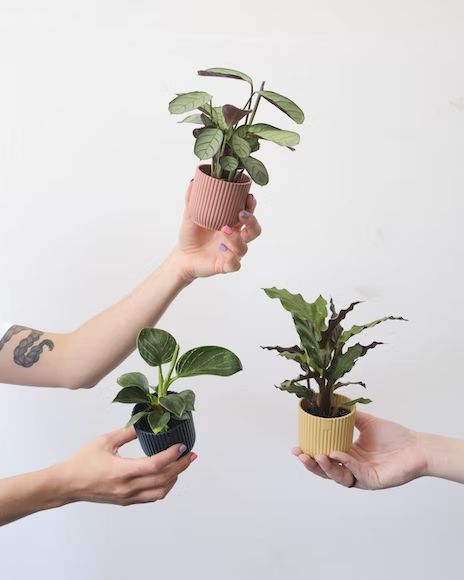
Companion Plants
Other tropical plants with bushy appearances or with a strike of color go well with the Calatheas. Some of the plants you may consider include bird of paradise, areca palms, fire spike, heliconia, variegated arboricola, croton, chenille plant, and pentas.
Some of these plants will have additional colors and hues of warm oranges and reds, perfectly complementing your greens.
These are examples of good companions of your Furry Feather Calathea:
- Calathea Makoyana – a tall plant with slender stems and elaborately sculpted leaves that is surely a show-stopper. Add this plant to your indoor garden collection and impress everyone who will see it. This is also a low-maintenance houseplant.
- Hoya, Neon Pothos, and Prayer Plant – all three green foliage plants look excellent together with your Furry Calathea. The vibrant colors of these plants draw the attention of observers.
Landscaping Ideas
Calathea plants can be hung or set near a window where they can receive ample indirect sunlight. They are relatively small plants, so they are ideal for small spaces.
If you are in a tropical or semi-tropical location, you may also plant them directly into the landscape along a walkway or near the pool with other tropical plants.
A full plant can also be placed in the corner of the house or along the entryway. Outdoors, it can be a filler plant for a garden corner, in between palm trunks, or under tall trees. Marantas can also be used as a beautiful and premium ground cover.
| What to plant with | Bird of Paradise, Areca Palms, Fire Spike, Heliconia, Variegated Arboricola, Croton, Chenille Plant, Pentas |
| What NOT to plant with | Basically nothing |
Conclusion
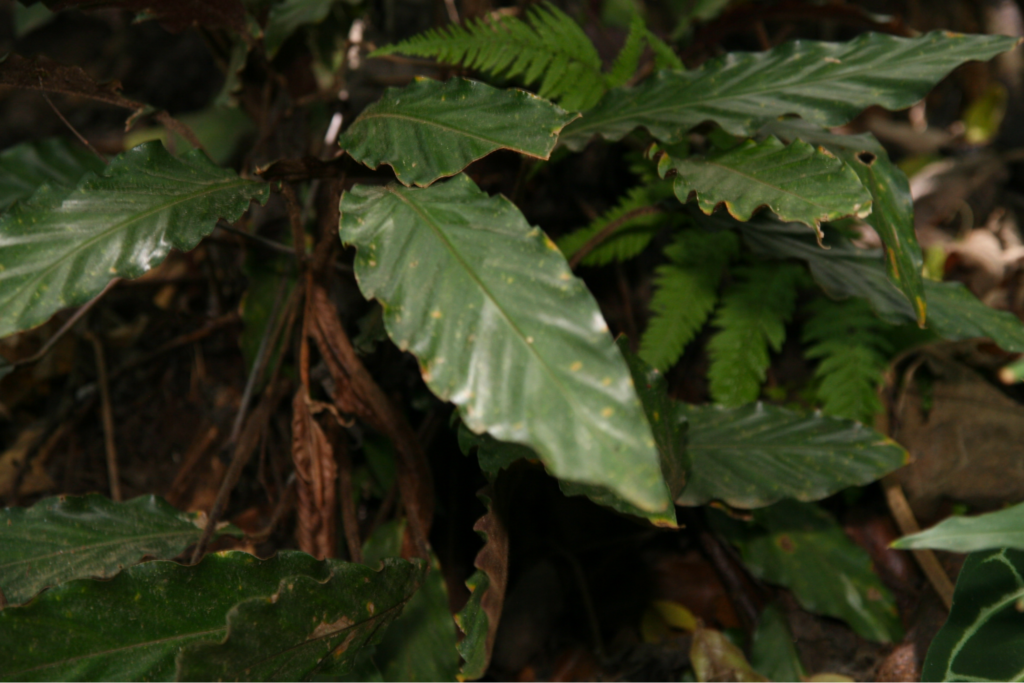
The Calathea Rufibarba is undoubtedly a standout among houseplants; that’s why it’s really popular. Its attractive and unique foliage is worth getting and trying for any plant lover. Just make sure to give it what it needs, and it will happily open and close throughout the day for you!
Frequently Asked Questions
Is Calathea Rufibarba hard to care for?
Calathea Rufibarba can be hard to care for, especially when you’re just starting out. But once you fully understand them, you will notice that they are easy to care for.
How often should I water my Calathea Rufibarba?
To avoid overwatering or underwatering your Calathea Rufibarba, check first the top 2 to 3 inches of soil before watering. If the plant has moist soil still, skip watering first. However, if the soil is cracked and dry, water your plant.
On average, water the Calathea Rufibarba 2-3 times a week during spring and summer, depending on your location. However, reduce the watering frequency during winter when the plant goes semi-dormant.
How do you propagate Calathea Rufibarba?
Calathea Rufibarba is propagated using root division. Just divide the plants by separating them via their roots. Then, put them in a proper growing medium and allow the roots to develop extensively.
Should I mist my Calathea?
It depends on your environmental conditions. For example, if your place is too dry and humid, you may help maintain the optimum humidity level by misting frequently. However, if your place is already at the optimum, skip misting because extreme moisture can make your plant rot.
How big do Calathea plants get?
Calathea plants can grow up to 10 to 12 feet tall with proper nourishment and care.
Editor’s Recommendations
Philodendron Splendid: The Fail-Proof Care, Propagation, and Watering Guide You Need
Hoya Retusa: The #1 Most Informative Care, Propagation, and Watering Guide
The 28 Most Gorgeous Alocasia Types You Can Grow In Your Homes







